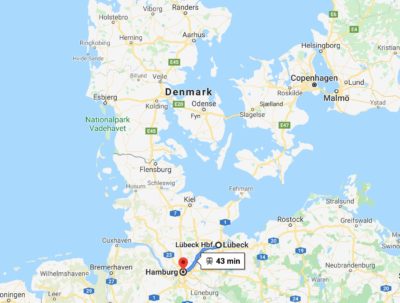@azeem offered David Galbraith to write for Exponential View readers his ideas on post-pandemic world scenarios.
Origen: 
Social interactions and communications scenarios
Most changes to social behavior over the last decade can be viewed through the lens of the counterreaction to increased virtual connectivity via the Internet and physical connectivity from globalization. …
…the success in controlling the pandemic, so far, in autocratic Eastern countries with more state control … as group outcomes overcome individual ones, means that personal data privacy may no longer be an option.
The online experience will become more real-time and less asynchronous.
For offline, in-person experiences may increasingly become premium ones
Trade and organizational model scenarios
…changes already underway were equivalent to the shift from agrarian to industrial, and not just a different phase of the Industrial Revolution, the previous shift resulted in fundamentally new types of trading entities and marketplaces…
…
If similar changes to information and trade flows today result in new types of organizations replacing current corporations and capital markets, then it’s likely that they will be structures more adapted to networks. One feature of this is that people will belong to multiple organizations and entities over time and at any one time, with the equivalent of equity in each, and possibly drawing annuity streams from them either as a worker or a member, sharing data.

Infrastructure and real estate scenarios
Before the pandemic hit, there was a secular decline in retail space demand already underway. This will clearly be accelerated as numbers of smaller retailers and restaurants reduce, and e-commerce and delivery services increase. …
there may be a narrowing of the price spread between attractive, rural residential property not normally commutable (say, two hours) outside major cities, as people work from home part of the time and cities gain notoriety as places of periodic disease outbreaks.
For infrastructure and mobility, the trend pre-pandemic was the smarter infrastructure … Post-pandemic there are several potential infrastructure implications if we see effects become long-term. … overcrowded public transport will become much less desirable … a convergence of the self-drive and ride-share model with public transport to one where much smaller vehicles carry a few people, point-to-point…
As the friction of air travel is likely to increase… Dedicated high-speed self-drive lanes between cities … allow for faster point-to-point travel than short-haul flights, for a fraction of the infrastructure cost of high-speed rail and using shortly available (Level 4) autonomous vehicle technology…
…a major trend in things such as healthcare may be decentralization … lead to a separation into different providers and a whole swathe of visits to general practitioners can be replaced by online telemedicine services.
Investment model scenarios
Venture capital … is a tiny asset class where returns are often not spectacular, but nonetheless has proven to create many of the world’s biggest companies. … in some ways be a continuation of a trend where sovereign wealth fund commitments to VC have doubled yearly, with more than 70% now directly participating in venture deals.
… To invest in these sustainable businesses would possibly require innovation on the VC model to allow returns as a variable percentage of future revenue above a threshold (a variable dividend), rather than looking for exits.
Political and economic scenarios
The traditional Right and Left are largely obsolete relics of the industrial era … middle class was built … of aligned incentives between workers and producers who could only find a large number of consumers that mass-produced products needed by paying their workers enough.
Today, zero marginal costs of production of things like software, and saturated attention created by ubiquitous smartphones and Internet access have completely shifted economic fundamentals from being supply to demand constrained for the first time in history. Since low-marginal cost, digital-era, products favor even greater mass production than industrial era ones, and are all competing for scarce attention of users, this should in theory, tip the scales in favor of workers. … It’s likely that some of the leverage for a future social pact may come from jobs that require social proximity such as the carers and delivery workers that have suddenly become much more valuable and critical, during the pandemic lockdown period and that their wages may increase.
Economically … There will be nationalisations and de facto partial nationalizations through bailouts and the role of the state will expand and taxes will increase…
…the alternative to an industrial style hierarchical state, is one that is much more fractal and decentralized and tries to preserve a balance of large and small, and public and private entities to allow for rewarding innovation and industriousness while protecting the disadvantaged and unfortunate…
Geopolitical scenarios
…for eighteen of the last twenty centuries, China and India constituted most of the world’s wealth output. It was the Industrial Revolution and the use of machines to leverage output, independent of population, that allowed Europe and then the US to become dominant.
China’s economic re-emergence suggests that it’s possible that Western hegemony was merely a blip and that the global center of gravity geopolitically will shift East again. … a further shift away from the traditional Left and Right, to identity based on resurgent nationalism outside of the cities and more diverse identities based on sub-traits, within. …The potential resurgence of city-states diminishes as a result of the pandemic, unless they have true sovereign status such as Singapore.
…as the role of the state naturally increases through de facto nationalisation, stimulus and health provision; Left will have to move to a larger model of unified as well as diverse identity to prevent the sweep of right-wing nationalism, all while the Right will have to adopt big state social measures such as universal health care in the US, just as it did in the 1930s…
